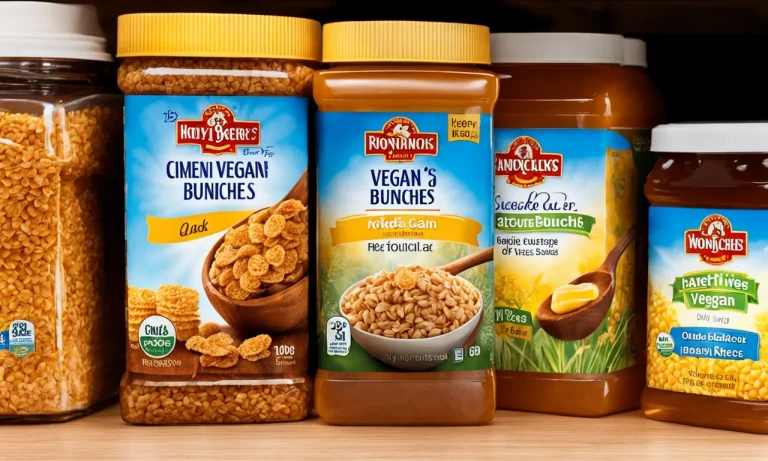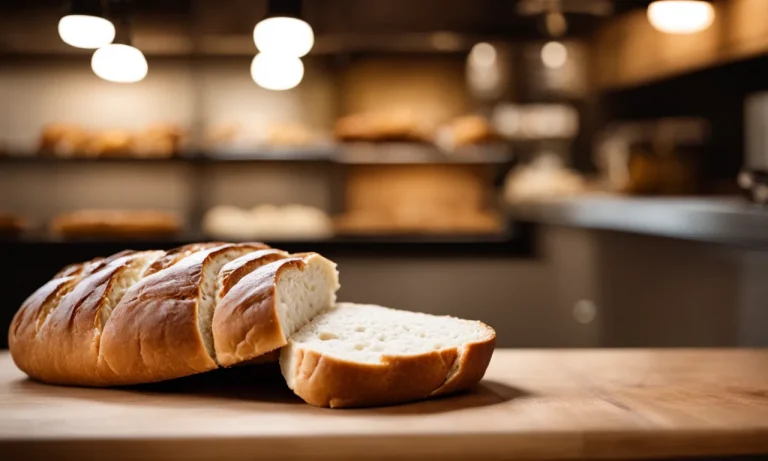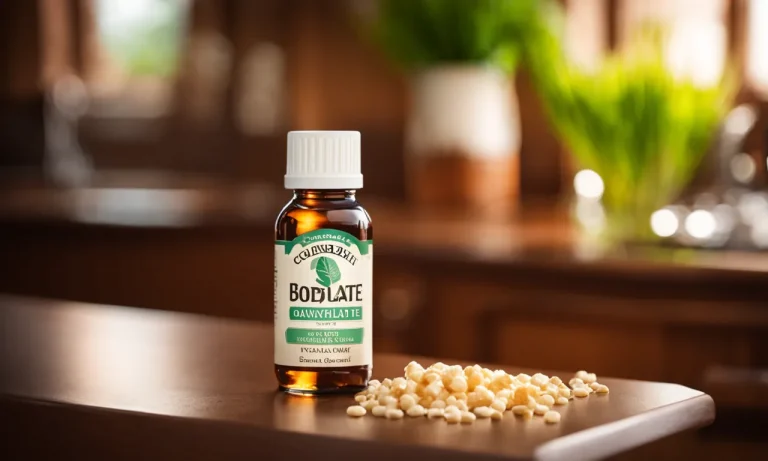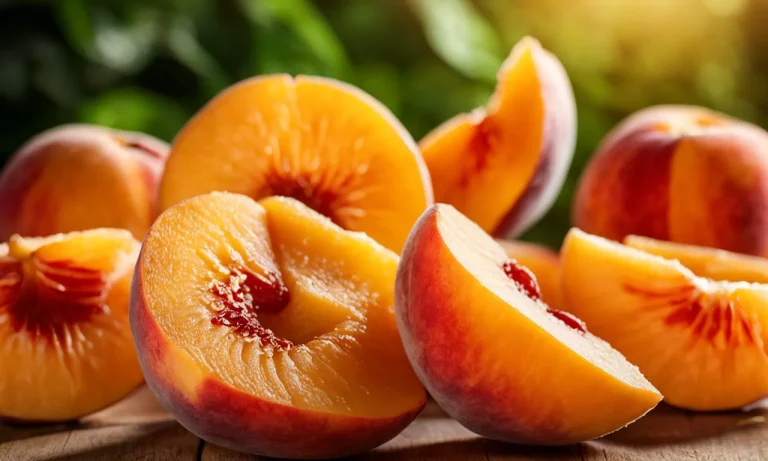Is Microcrystalline Cellulose Vegan? An In-Depth Look
Microcrystalline cellulose is a common ingredient used as a binder, emulsifier, and stabilizer in many packaged foods. But its unfamiliar name leaves many vegans scratching their heads. Is this ubiquitous additive off-limits for plant-based diets or is it vegan-friendly?
Let’s analyze the sources and production process of microcrystalline cellulose to find out.
If you’re short on time, here’s the quick answer: Yes, microcrystalline cellulose is generally vegan. It is most often derived from plant sources like wood pulp or bamboo through a chemical process.
What is Microcrystalline Cellulose?
Microcrystalline cellulose is a commonly used excipient in the pharmaceutical and food industries. It is a white, odorless, and tasteless powder that is derived from cellulose, a natural polymer found in the cell walls of plants.
Microcrystalline cellulose is made up of tiny particles with crystalline structures, which give it its unique properties and make it useful in a variety of applications.
Cellulose Definition
Cellulose is the most abundant organic compound on Earth and is found in the cell walls of plants. It is a complex carbohydrate made up of glucose units linked together in long chains. Cellulose provides structural support to plants and is responsible for their rigidity.
It is a fibrous material that cannot be digested by humans due to the lack of necessary enzymes in our digestive system. However, it can be processed into various forms, such as microcrystalline cellulose, to be used in a range of industries.
Production Process
The production process of microcrystalline cellulose involves several steps. Initially, cellulose is extracted from natural sources like wood pulp, cotton, or agricultural waste. The cellulose is then purified and chemically treated to remove impurities and enhance its properties.
The purified cellulose is then hydrolyzed using acid or enzymatic methods to break down the long chains of glucose units into smaller particles. These particles are further processed and milled to create microcrystalline cellulose with specific particle sizes and properties.
The production of microcrystalline cellulose is closely regulated to ensure its quality and safety. It must comply with strict standards set by regulatory authorities, such as the United States Pharmacopeia (USP) or the European Pharmacopoeia (EP), to be used in pharmaceutical and food applications.
These standards ensure that microcrystalline cellulose is free from contaminants and meets the necessary criteria for its intended use.
It is worth noting that the production of microcrystalline cellulose is a sustainable process as it utilizes plant-based raw materials and does not involve the use of synthetic or harmful chemicals. This makes it an environmentally friendly choice for various industries.
Common Sources of Microcrystalline Cellulose
Microcrystalline cellulose is a common ingredient used in various industries, including pharmaceuticals, food, and cosmetics. It is a versatile substance that offers numerous benefits, such as improved texture, binding properties, and stability. But where does microcrystalline cellulose come from?
Let’s take a closer look at some of the common sources:
Wood Pulp
One of the main sources of microcrystalline cellulose is wood pulp. Wood pulp is obtained from trees, typically softwood species like pine or spruce. The process involves breaking down the wood fibers into cellulose, which is then further processed to create microcrystalline cellulose.
Wood pulp-derived microcrystalline cellulose is widely used in the pharmaceutical industry, where it serves as a diluent or filler in medication tablets.
Bamboo
Another source of microcrystalline cellulose is bamboo. Bamboo is a fast-growing plant that has gained popularity in recent years due to its sustainability and environmental friendliness. The cellulose extracted from bamboo can be processed into microcrystalline cellulose, which can be used as a bulking agent or stabilizer in various products, including food supplements and cosmetics.
Cotton
Cotton is yet another source of microcrystalline cellulose. Cotton fibers, which are primarily composed of cellulose, can be processed and refined to produce microcrystalline cellulose. This form of microcrystalline cellulose is commonly used in the food industry as an anti-caking agent or thickener in powdered products.
It’s important to note that microcrystalline cellulose derived from wood pulp, bamboo, or cotton does not contain any animal-derived ingredients, making it suitable for vegans. However, it’s always advisable to check the specific product labels or consult the manufacturer to ensure that the microcrystalline cellulose used is indeed vegan-friendly.
Why Microcrystalline Cellulose is Usually Vegan
Microcrystalline cellulose is a commonly used ingredient in various industries, including pharmaceuticals, food, and cosmetics. It is a fine, white powder that is derived from plant-based sources, such as wood pulp or cotton.
This cellulose is processed and purified to create microcrystalline cellulose, which has a wide range of applications due to its unique properties.
Plant-Based Origin
The primary reason why microcrystalline cellulose is usually considered vegan is because it is derived from plant-based sources. Unlike some other additives or excipients, microcrystalline cellulose does not contain any animal-derived ingredients.
This makes it a suitable choice for individuals following a vegan lifestyle or those who prefer to avoid animal products.
No Animal Testing
In addition to its plant-based origin, microcrystalline cellulose is also typically not tested on animals. Many companies prioritize ethical and cruelty-free practices, and they opt for alternative testing methods to ensure the safety and efficacy of their products.
Therefore, when choosing products that contain microcrystalline cellulose, consumers can have confidence that they are supporting companies that align with their values.
Wide Range of Applications
Microcrystalline cellulose is valued for its versatility and is used in a variety of products. In the pharmaceutical industry, it is commonly used as a binder, disintegrant, and filler in tablets and capsules.
In the food industry, it is used as a stabilizer, thickener, and anti-caking agent in various processed foods. Additionally, it is used in cosmetics and personal care products as a bulking agent and emulsion stabilizer.
The widespread use of microcrystalline cellulose across different industries highlights its importance and reliability as a vegan ingredient. Its plant-based origin and absence of animal testing make it a popular choice among manufacturers and consumers.
For more information on microcrystalline cellulose and its vegan status, you can visit reputable sources such as The Vegan Society or PETA.
Animal-Derived Microcrystalline Cellulose
Microcrystalline cellulose is a commonly used ingredient in various industries, including pharmaceuticals, food, and cosmetics. However, not all microcrystalline cellulose is vegan-friendly. Some versions of microcrystalline cellulose are derived from animal tissue, making them unsuitable for those following a vegan lifestyle.
Versions Derived from Animal Tissue
Animal-derived microcrystalline cellulose is typically sourced from livestock such as cows or pigs. The cellulose is extracted from their muscle or connective tissues. This extraction process involves breaking down the tissues using chemicals and enzymes, followed by purification to obtain the cellulose.
While animal-derived microcrystalline cellulose may be considered a by-product of the meat industry, it poses a dilemma for those who choose to avoid animal products altogether. Vegans and individuals who follow plant-based diets may prefer to opt for alternatives that are not sourced from animals.
Contamination Risk
One of the concerns associated with animal-derived microcrystalline cellulose is the risk of contamination. As the cellulose is extracted from animal tissues, there is a possibility of cross-contamination with other animal-derived substances, such as proteins or fats.
This can be problematic for individuals with allergies or dietary restrictions.
To address this concern, reputable manufacturers of microcrystalline cellulose implement strict quality control measures to ensure the absence of contaminants. They employ testing methods to verify the purity of the product and minimize the risk of cross-contamination.
It is important for consumers to choose products from trusted sources that adhere to these quality standards.
It’s worth noting that not all microcrystalline cellulose is derived from animal sources. There are vegan-friendly alternatives available on the market, typically made from plant-based materials such as wood pulp or cotton.
These alternatives provide a suitable option for vegans and individuals seeking animal-free products.
If you’re uncertain about the source of microcrystalline cellulose in a specific product, it’s advisable to contact the manufacturer directly or check their website for more information. Transparency in labeling and product information is crucial for consumers to make informed choices.
How to Check if Microcrystalline Cellulose is Vegan
When it comes to determining whether microcrystalline cellulose is vegan, there are a few steps you can take to ensure that the product aligns with your dietary choices. Here are two effective ways to check if microcrystalline cellulose is vegan:
Contact the Manufacturer
One of the best ways to determine the vegan status of microcrystalline cellulose is to reach out to the manufacturer directly. By contacting the company, you can inquire about their sourcing and production methods.
Ask specific questions such as whether the microcrystalline cellulose is derived from plant-based sources or if any animal products are used in the manufacturing process. Manufacturers who prioritize transparency and cater to vegan consumers will be happy to provide you with the necessary information.
Look for Third-Party Certifications
Another reliable method to verify the vegan status of microcrystalline cellulose is to look for third-party certifications. These certifications are usually displayed on the product packaging or the manufacturer’s website.
One such certification is the Vegan Society’s Vegan Trademark, which guarantees that the product does not contain any animal-derived ingredients or involve animal testing. Additionally, some manufacturers may have their products certified by organizations like the Non-GMO Project or the Certified Vegan program.
These certifications can provide you with the assurance you need when it comes to choosing vegan-friendly microcrystalline cellulose.
It’s important to note that while contacting the manufacturer and looking for certifications are effective methods, it’s always a good idea to do your own research and read product labels. By being proactive and informed, you can make confident decisions about whether microcrystalline cellulose is vegan or not.
Bottom Line
Microcrystalline cellulose is a commonly used excipient in pharmaceuticals, food, and cosmetic products. It is a vegan-friendly ingredient derived from plant sources such as wood pulp or cotton. Its versatility, inertness, and ability to improve the texture and stability of products make it a popular choice among manufacturers.
While microcrystalline cellulose itself is vegan, it’s essential to consider other factors that may affect its vegan status. For instance, some manufacturers may use animal-based additives or processing aids during the production of microcrystalline cellulose.
It’s crucial to read product labels or contact the manufacturer directly to ensure that the specific microcrystalline cellulose you’re using is free from any animal-derived ingredients.
For individuals following a vegan lifestyle, it’s also important to note that microcrystalline cellulose is a processed ingredient. Some vegans prefer to avoid processed foods altogether and opt for whole, unprocessed plant-based alternatives.
Ultimately, the decision to include microcrystalline cellulose in a vegan diet depends on personal preferences and beliefs.
It’s worth mentioning that microcrystalline cellulose is generally recognized as safe by regulatory bodies such as the U.S. Food and Drug Administration (FDA) and the European Food Safety Authority (EFSA).
It has a long history of safe use in various industries and has undergone rigorous testing to ensure its safety for consumption.
Conclusion
While most microcrystalline cellulose is vegan, it pays to be vigilant when dealing with mysterious food additives. With a discerning eye for labels and supply chains, vegans can enjoy peace of mind knowing whether this common thickening agent aligns with their diet and values.







